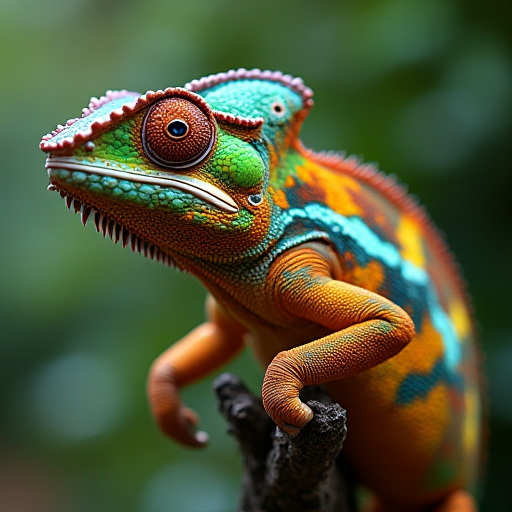
Why Do Chameleons Change Color?
Chameleons are among the most fascinating reptiles on Earth, known for their unique ability to change colors. This extraordinary trait has captivated scientists and nature lovers alike, leading to numerous studies and observations. But why do chameleons change color? In this article, we'll explore the reasons behind this intriguing behavior, the mechanisms involved, and dispel some common myths.
Understanding Chameleon Color Change
Chameleons belong to the family Chamaeleonidae and are mostly found in Madagascar, Africa, and parts of Asia. While they are often associated with their color-changing ability, not all chameleons are equally adept at this skill. Their ability to change color is a result of complex interactions involving their skin, environment, and physiological state.
The Mechanism Behind Color Change
Chameleons change color through the manipulation of specialized cells in their skin called chromatophores. These cells contain different pigments:
- Melanophores - Contain black and brown pigments (melanin).
- Xanthophores - Contain yellow pigments.
- Erythrophores - Contain red pigments.
- Iridophores - Reflective cells that contain guanine crystals, reflecting different wavelengths of light, giving rise to blue and white hues.
By expanding or contracting these cells, chameleons can mix and match colors, creating a wide range of hues. The iridophores, in particular, play a crucial role by reflecting light, which can result in the appearance of green when combined with yellow pigments.
Reasons for Color Change
Contrary to popular belief, chameleons do not primarily change color to blend into their surroundings. While camouflage can be a secondary benefit, there are several other primary reasons for their color changes:
1. Communication
Chameleons use color changes as a form of communication. This is especially prevalent during social interactions such as:
- Mating Displays: Males often display brighter, more vibrant colors to attract females or to ward off rival males.
- Territorial Signals: Colors can signify dominance or submission during territorial disputes.
- Stress Indicators: When threatened or stressed, chameleons may change color to darker shades to signal distress.
2. Temperature Regulation
Chameleons are ectothermic (cold-blooded), meaning they rely on external heat sources to regulate their body temperature. By changing their skin color, they can effectively manage their temperature:
- Darker Colors: Absorb more heat, helping to warm up in cooler temperatures.
- Lighter Colors: Reflect heat, aiding in cooling down when it's too hot.
3. Camouflage
While not the primary purpose, camouflage is a beneficial side effect. By blending with their environment, chameleons can avoid predators or sneak up on prey. This ability is particularly useful in dense foliage where subtle changes in light and color can aid in concealment.
Misconceptions About Color Change
There are several misconceptions about why and how chameleons change color:
- Instantaneous Change: Though chameleons can change colors relatively quickly, it is not instantaneous. The process can take several seconds to minutes, depending on the environmental conditions and the chameleon’s physiological state.
- Unlimited Colors: Chameleons cannot turn any color at will. Their color range is limited by the pigments in their chromatophores and the structural properties of their skin.
- Universal Skill: Not all chameleons have the same capability for color change. The degree and range of color change vary significantly among different species.
Conclusion
Chameleons’ ability to change color is a remarkable adaptation that serves multiple purposes beyond mere camouflage. It is a sophisticated form of communication, a tool for thermoregulation, and a means of protection. Understanding the true nature of this ability provides insight into the complex lives of these incredible reptiles and underscores the marvels of evolutionary biology. As we continue to study chameleons, we gain a greater appreciation for the intricate relationship between organisms and their environments.
